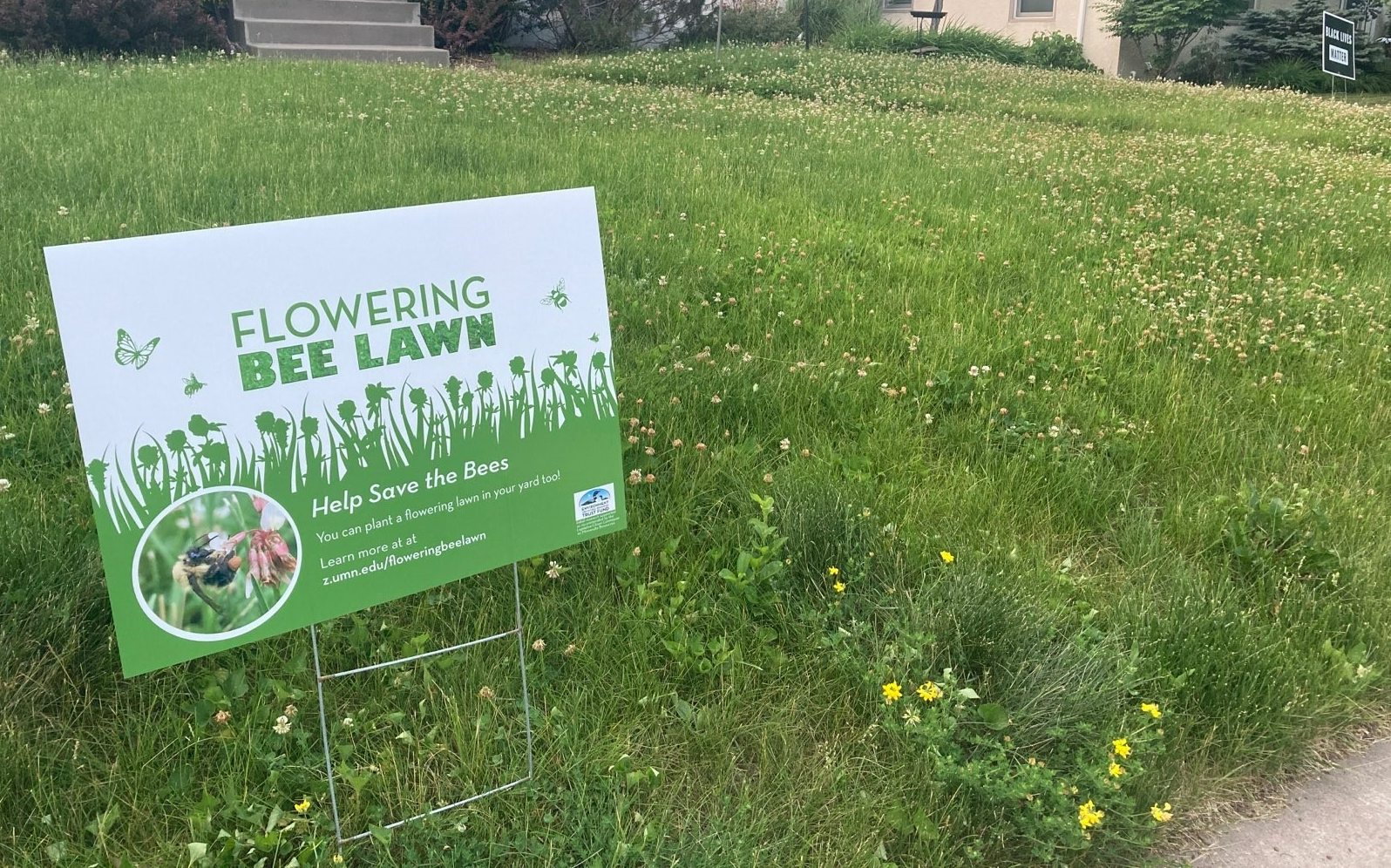pollinators
Testing alternative clover options for use in Kentucky bluegrass lawns
By Paige Boyle
For many years, white clover (Trifolium repens) has been the go-to for adding flowering resources into lawns, and with good reason. White clover is a perennial, has a broad geographic range, can grow in both warm- and cool-season lawns, handles mowing well, and produces an abundance of flowers to provide pollinator forage (both pollen and nectar) in bee lawns. As a bonus, because white clover is a legume, it also adds nitrogen into the soil, resulting in less need for fertilizer applications. But are there other clover options for use in home lawns?
University of Minnesota Turfgrass team in the media – 5/16/24
Check out our team’s latest efforts in educating the public about our work. An article on "Slow Mow Summer" in Sierra, the magazine for the Sierra Club, features comments from Turfgrass Extension Educator Jon Trappe.
See Blossoms Over Blades: Embrace "Slow Mow Summer" for a Buzz-Worthy Lawn by Anne Readel on the Sierra Club website for the full article!
University of Minnesota Turfgrass team in the media – 5/1/23
Check out our team’s latest efforts in educating the public about our work. Turfgrass Extension Educator Jon Trappe was featured in a local news segment.
Watch New research has scientists rethinking the popular No Mow May idea from a Kare 11 broadcast on April 27, 2023!
University of Minnesota Turfgrass team in the media – 5/4/22
Check out our team’s latest efforts in educating the public about our work.
Can golf courses "bee" friendly?
It is critically important, and at the heart of what it means to be a sustainabl
Pace of play research creates opportunities in environmental stewardship and sustainability
By Parker Anderson
Thursday, November 30, 2017
Recently, the Science of the Green Initiative at the University of Minnesota, in partnership with the United States Golf Association (USGA), collected data on golf pace of play to examine the impacts of green speed on pace of play at seven golf courses of differing characteristics around the United States. The implications of the data collected, however, are far greater than just measuring the time each player spent on the putting greens; the results have additional value regarding golf facility sustainability and productivity.
Pace of Play Research Creates Opportunities in Environmental Stewardship and Sustainability
By Parker Anderson
Creeping Charlie: Management and Value to Pollinators
By James Wolfin and Phoebe Koenig - UMN Bee Lab

